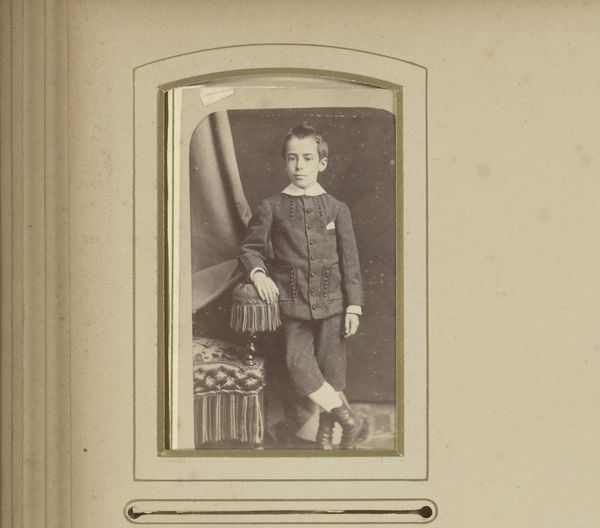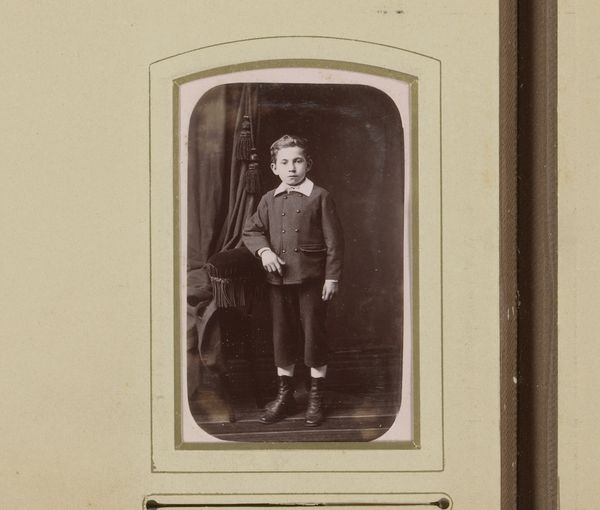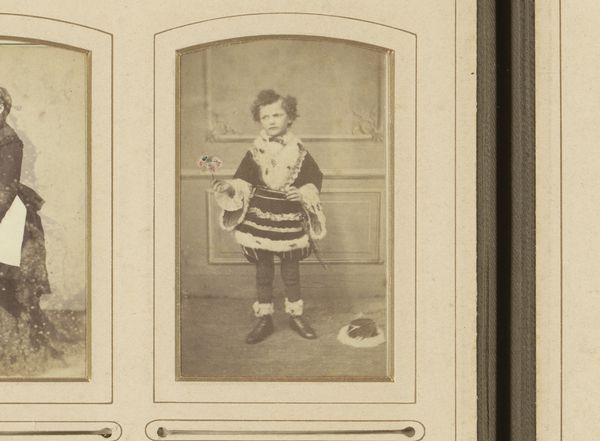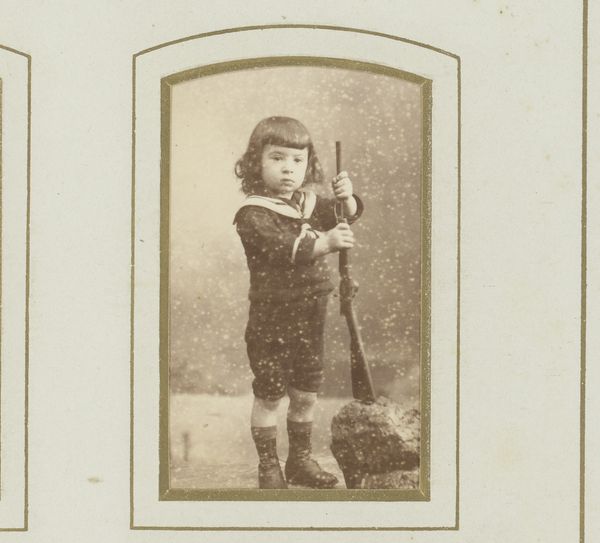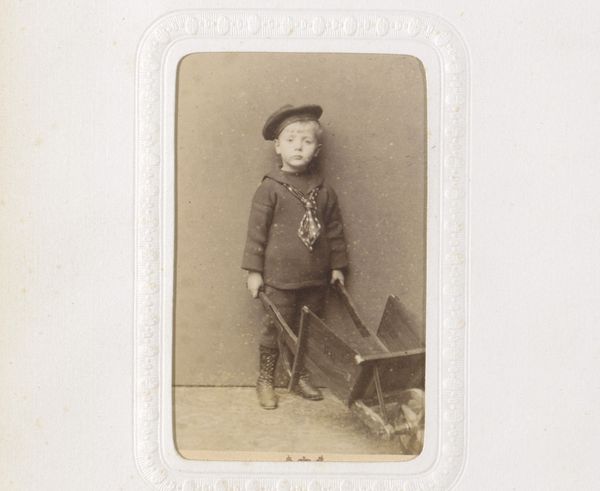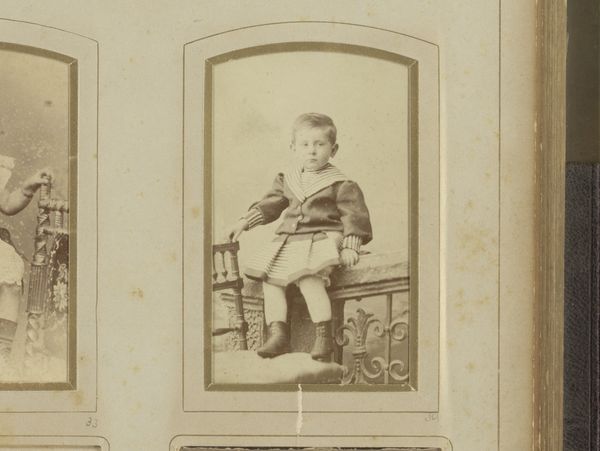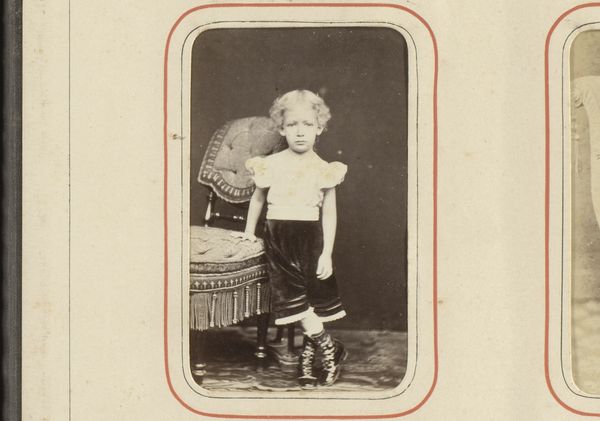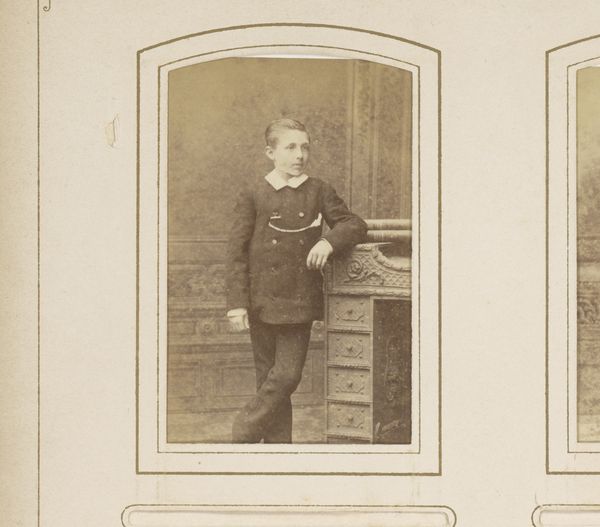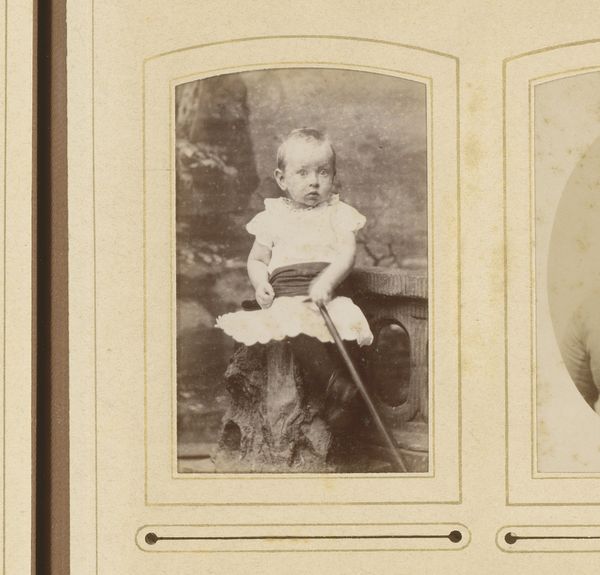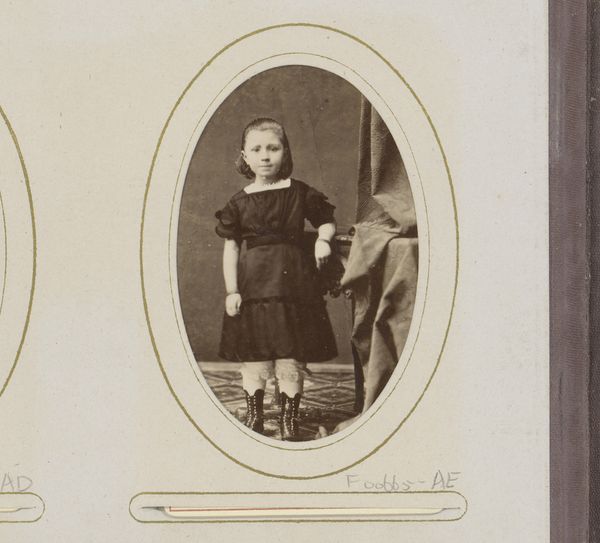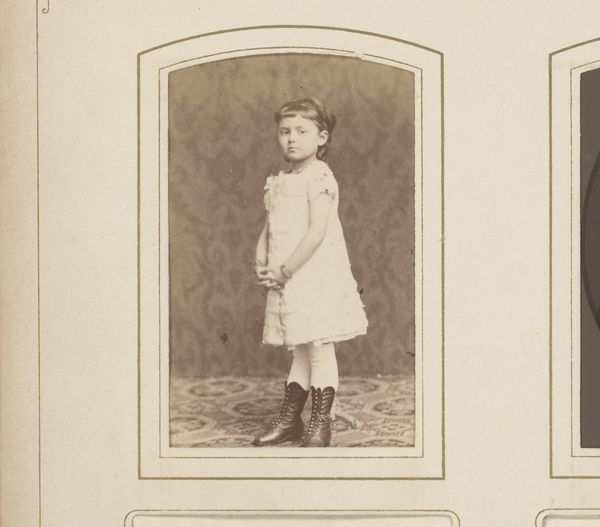
photography, gelatin-silver-print
#
portrait
#
still-life-photography
#
photography
#
historical photography
#
gelatin-silver-print
#
19th century
#
genre-painting
Dimensions: height 82 mm, width 50 mm
Copyright: Rijks Museum: Open Domain
This is a portrait of a child with a doll, made by A. Böeseken sometime between the mid-19th and early 20th century. It's a photograph, likely an albumen print, a process that involves coating paper with egg white and silver nitrate to create a light-sensitive surface. The process itself, though scientific, relied on skilled darkroom work. The final print, mounted onto card stock, becomes a precious object. Note the child's clothing and carefully posed demeanor, a reflection of the era's values and the rising middle class. The doll, a manufactured object, signifies the burgeoning consumer culture. Consider the labor involved: from the photographer meticulously preparing the chemicals, to the child's family investing in this symbol of status. Photography democratized portraiture, yet retained a sense of ceremony. By looking at the materials and processes, we gain insight into the social context of this seemingly simple image, and consider the shifting boundaries between art, craft, and industry.
Comments
No comments
Be the first to comment and join the conversation on the ultimate creative platform.
